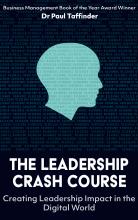Conflict exists in all human social interaction. It is widely assumed to be a bad thing. Certainly, many types of conflict involving personal hostility or disputes within and between teams about identity or values can be destructive. There are, however, greater dangers in avoiding or suppressing conflict. Managers who ¬– worried about their reputation or fearing criticism – desist from raising contentious issues about the way processes are working or who neglect to forward to other teams, or more senior executives, unflattering or critical data, avoid, suppress or ignore conflict with potentially devastating consequences.
Recognising that conflicts do occur and that it is better to prevent task-related conflict becoming social conflict, leaders need to learn to fight fairly.
Futile, destructive, unsatisfactory – these are the epithets used to describe conflict by both managers and management writers. It is hard to find anyone who actively encourages the use of conflict. In fact, the implicit and explicit determination of most people is to identify, manage and smooth out conflict. As received wisdom it sounds convincing, but it isn’t true.
What is conflict?
Conflict is active, often contentious dispute, debate or disagreement, typically triggered or accompanied by the presentation of contrary or opposing information.
Let’s catalogue some of the benefits (uncovered in much recent psychological research) that can be gained from judicious escalation of conflict:
- Motivation and energy to deal with underlying problems.
- Making hidden or underlying issues explicit and therefore amenable to being tackled.
- Sharpening people’s understanding of goals (clearing up miscommunication and misunderstanding).
- Stimulating individuals to define where they stand, thereby building mutual understanding between different groups.
- Driving a sense of urgency.
- Discouraging avoidance behavior (such as pretending a problem doesn’t exist or that everything is OK when it really isn’t).
- Preventing premature solutions, which achieve only half-baked, impoverished or unintended results.
Clearly, these are all benefits that leaders would like. Indeed, it is easy to think of intractable problems – for example, poor integration of different business units that are supposed to be working seamlessly together to service customers – that need dramatic action to flush out dysfunctional and entrenched processes, ways of working and behavior.
Unfortunately, the notion of conflict escalation is counterintuitive. Deliberately stimulating conflict is aversive for us, in the short-term at least. It produces stress, might lead to resistance, additional effort, delays, awkwardness and embarrassment. These are obvious costs rather than benefits, and they’re all genuine concerns – but they are short-term concerns. Leadership must look to the longer-term, not exclusively, but predominantly.

The conflict curve
Another aspect of conflict to understand is that at the individual level conflict can boost performance but, if escalated too much, it can create paralysis. The best way to illustrate this is to use a diagram (Figure 1). This shows the bell-shaped curve that psychologists use to demonstrate how human performance begins to improve as the intensity of conflict rises.
When conflict gets too high, however, people become paralysed: they retreat to more rigid patterns of behavior, they think in a more constrained way, consider fewer options or alternatives and tend to see threats when there may be none.
Task-related conflict and social conflict
Perhaps the most important thing for leaders to understand about conflict is the difference between task-related and social conflict. Task-related conflict typically produces desirable outcomes such as better solutions, greater understanding of a problem, shared comprehension of complex issues and a sense of urgency. Social conflict reduces performance and satisfaction and promotes rigidity and ‘groupthink’ – a tendency for everyone in a team to think in the same way and to ignore or downplay genuine threats. The differences between task-related conflict and social conflict are shown in Table 1.

Leaders should be alert to the real danger of peacemaking initiatives where these are inappropriate (and may simply drive conflict below the surface or, worse, postpone it to – a more damaging moment) and, second, to create and exploit constructive conflict. Moreover, the best leaders make every effort to build unity and cohesion around values and norms (thus reducing social conflict). They will often talk about ‘pulling in the same direction’ and ‘a single sense of purpose’.
How to escalate conflict: four guidelines
There are four useful guidelines I use to coach leaders in the judicious use of conflict:
- Learn to fight fairly.
- Establish a conflict protocol as a standard throughout your team.
- Differentiate before you integrate: express differences first before you work towards agreement.
- Shake up the complacency of success.
Learn to fight fairly
It will not have escaped your notice that many of the meetings you attend, whether you work in business, government, sport or elsewhere, sometimes deteriorate into harsh disagreement and mutual hostility, after which no business can be transacted.
Recognising that conflicts do occur and that it is better to prevent task-related conflict becoming social conflict, leaders need to learn to fight fairly. The four rules for fair fighting are:
- No knockout blows: no one should be trying to achieve victory over others with different views.
- Reciprocity: anyone in the meeting who holds opposing points of view should be allowed to make their case or argue their corner in response. Hierarchy (entrenched boss-subordinate relationships) kills this reciprocity.
- Honesty: trying to generalise, bluff or be underhanded will also kill fair fighting. Using facts and clear evidence should be encouraged.
- No ultimatums: threats are attempts at dominance and introduce the possibility either of personal attacks or a complete shutdown of task-focused debate.
Establish a conflict protocol as a standard throughout your team
One of your objectives in leading your team should be to communicate (by example) the practice of fair fighting. As a leader you have the power to legitimise constructive conflict and build it into your team’s behavior, by encouraging:
- An acceptance of diverse viewpoints, from the most senior to the most junior, from the most experienced to the least, valuing both internal and external perspectives and the experiences of people from diverse backgrounds.
- The examination of opposing suggestions, options or recommendations rather than simply giving them cursory attention.
- Frank and intense debate.
- Collaboration, sharing and speaking openly.
- The making of a sharp distinction between political manoeuvring and personal attacks (which lead to distrust and disaffection) and open, constructive conflict (which leads to task-related progress and better decisions).
Differentiate before you integrate
Social interaction in business inevitably emphasises integration, i.e., early agreement or acquiescence to a decision. Premature or too rapid decision-making, however, tends to exclude material facts, data and perspectives – people are working towards decisions based on poor-quality data. As a consequence, the decisions are poor. Nevertheless, organisations, particularly in the digital world, value speed. The danger therefore is in unknowingly pushing for integration (‘let’s get agreement on the way forward – fast!’) before other relevant information is brought into the open, opposing interests identified or alternatives considered.
This is particularly important in strategic decision-making. Senior management must ensure that it has viable options – real alternatives based on real facts – before any strategy can be discussed or approved. Surprisingly, this leadership behavior is very rare in many organisations.
The responsibility of leadership, therefore, is to get the sequence right. Express differences and options first, then work towards integration and decisions.
Shake up the complacency of success
In my executive coaching, I teach a number of tactics to leaders to shake up complacency:
- Move managers or adjust the composition of the team.
- Raise standards or objectives, thereby driving urgency – for example, aim to achieve specific objectives in half the time originally set or double the return over the same period.
- Create competition between teams.
- Create contention around specific facts, processes or ways of working, then invite teams to make improvements.
- Bring in consultants to uncover and suggest changes or ask deliberately provocative questions like, ‘what if the business was entirely digital? What would the benefits and disadvantages be?’
Interested in this topic? Read Conflict management: how to be generative rather than destructive.
This article is an excerpt from The leadership crash course: creating leadership impact in the digital world by Paul Taffinder.
Conflict exists in all human social interaction. It is widely assumed to be a bad thing. Certainly, many types of conflict involving personal hostility or disputes within and between teams about identity or values can be destructive. There are, however, greater dangers in avoiding or suppressing conflict. Managers who ¬– worried about their reputation or fearing criticism – desist from raising contentious issues about the way processes are working or who neglect to forward to other teams, or more senior executives, unflattering or critical data, avoid, suppress or ignore conflict with potentially devastating consequences.
Recognising that conflicts do occur and that it is better to prevent task-related conflict becoming social conflict, leaders need to learn to fight fairly.
Futile, destructive, unsatisfactory – these are the epithets used to describe conflict by both managers and management writers. It is hard to find anyone who actively encourages the use of conflict. In fact, the implicit and explicit determination of most people is to identify, manage and smooth out conflict. As received wisdom it sounds convincing, but it isn't true.
What is conflict?
Conflict is active, often contentious dispute, debate or disagreement, typically triggered or accompanied by the presentation of contrary or opposing information.
Let's catalogue some of the benefits (uncovered in much recent psychological research) that can be gained from judicious escalation of conflict:
- Motivation and energy to deal with underlying problems.
- Making hidden or underlying issues explicit and therefore amenable to being tackled.
- Sharpening people's understanding of goals (clearing up miscommunication and misunderstanding).
- Stimulating individuals to define where they stand, thereby building mutual understanding between different groups.
- Driving a sense of urgency.
- Discouraging avoidance behavior (such as pretending a problem doesn't exist or that everything is OK when it really isn't).
- Preventing premature solutions, which achieve only half-baked, impoverished or unintended results.
Clearly, these are all benefits that leaders would like. Indeed, it is easy to think of intractable problems – for example, poor integration of different business units that are supposed to be working seamlessly together to service customers – that need dramatic action to flush out dysfunctional and entrenched processes, ways of working and behavior.
Unfortunately, the notion of conflict escalation is counterintuitive. Deliberately stimulating conflict is aversive for us, in the short-term at least. It produces stress, might lead to resistance, additional effort, delays, awkwardness and embarrassment. These are obvious costs rather than benefits, and they're all genuine concerns – but they are short-term concerns. Leadership must look to the longer-term, not exclusively, but predominantly.

The conflict curve
Another aspect of conflict to understand is that at the individual level conflict can boost performance but, if escalated too much, it can create paralysis. The best way to illustrate this is to use a diagram (Figure 1). This shows the bell-shaped curve that psychologists use to demonstrate how human performance begins to improve as the intensity of conflict rises.
When conflict gets too high, however, people become paralysed: they retreat to more rigid patterns of behavior, they think in a more constrained way, consider fewer options or alternatives and tend to see threats when there may be none.
Task-related conflict and social conflict
Perhaps the most important thing for leaders to understand about conflict is the difference between task-related and social conflict. Task-related conflict typically produces desirable outcomes such as better solutions, greater understanding of a problem, shared comprehension of complex issues and a sense of urgency. Social conflict reduces performance and satisfaction and promotes rigidity and 'groupthink' – a tendency for everyone in a team to think in the same way and to ignore or downplay genuine threats. The differences between task-related conflict and social conflict are shown in Table 1.

Leaders should be alert to the real danger of peacemaking initiatives where these are inappropriate (and may simply drive conflict below the surface or, worse, postpone it to – a more damaging moment) and, second, to create and exploit constructive conflict. Moreover, the best leaders make every effort to build unity and cohesion around values and norms (thus reducing social conflict). They will often talk about 'pulling in the same direction' and 'a single sense of purpose'.
How to escalate conflict: four guidelines
There are four useful guidelines I use to coach leaders in the judicious use of conflict:
- Learn to fight fairly.
- Establish a conflict protocol as a standard throughout your team.
- Differentiate before you integrate: express differences first before you work towards agreement.
- Shake up the complacency of success.
Learn to fight fairly
It will not have escaped your notice that many of the meetings you attend, whether you work in business, government, sport or elsewhere, sometimes deteriorate into harsh disagreement and mutual hostility, after which no business can be transacted.
Recognising that conflicts do occur and that it is better to prevent task-related conflict becoming social conflict, leaders need to learn to fight fairly. The four rules for fair fighting are:
- No knockout blows: no one should be trying to achieve victory over others with different views.
- Reciprocity: anyone in the meeting who holds opposing points of view should be allowed to make their case or argue their corner in response. Hierarchy (entrenched boss-subordinate relationships) kills this reciprocity.
- Honesty: trying to generalise, bluff or be underhanded will also kill fair fighting. Using facts and clear evidence should be encouraged.
- No ultimatums: threats are attempts at dominance and introduce the possibility either of personal attacks or a complete shutdown of task-focused debate.
Establish a conflict protocol as a standard throughout your team
One of your objectives in leading your team should be to communicate (by example) the practice of fair fighting. As a leader you have the power to legitimise constructive conflict and build it into your team's behavior, by encouraging:
- An acceptance of diverse viewpoints, from the most senior to the most junior, from the most experienced to the least, valuing both internal and external perspectives and the experiences of people from diverse backgrounds.
- The examination of opposing suggestions, options or recommendations rather than simply giving them cursory attention.
- Frank and intense debate.
- Collaboration, sharing and speaking openly.
- The making of a sharp distinction between political manoeuvring and personal attacks (which lead to distrust and disaffection) and open, constructive conflict (which leads to task-related progress and better decisions).
Differentiate before you integrate
Social interaction in business inevitably emphasises integration, i.e., early agreement or acquiescence to a decision. Premature or too rapid decision-making, however, tends to exclude material facts, data and perspectives – people are working towards decisions based on poor-quality data. As a consequence, the decisions are poor. Nevertheless, organisations, particularly in the digital world, value speed. The danger therefore is in unknowingly pushing for integration ('let's get agreement on the way forward – fast!') before other relevant information is brought into the open, opposing interests identified or alternatives considered.
This is particularly important in strategic decision-making. Senior management must ensure that it has viable options – real alternatives based on real facts – before any strategy can be discussed or approved. Surprisingly, this leadership behavior is very rare in many organisations.
The responsibility of leadership, therefore, is to get the sequence right. Express differences and options first, then work towards integration and decisions.
Shake up the complacency of success
In my executive coaching, I teach a number of tactics to leaders to shake up complacency:
- Move managers or adjust the composition of the team.
- Raise standards or objectives, thereby driving urgency – for example, aim to achieve specific objectives in half the time originally set or double the return over the same period.
- Create competition between teams.
- Create contention around specific facts, processes or ways of working, then invite teams to make improvements.
- Bring in consultants to uncover and suggest changes or ask deliberately provocative questions like, 'what if the business was entirely digital? What would the benefits and disadvantages be?'
Interested in this topic? Read Conflict management: how to be generative rather than destructive.
This article is an excerpt from The leadership crash course: creating leadership impact in the digital world by Paul Taffinder.






